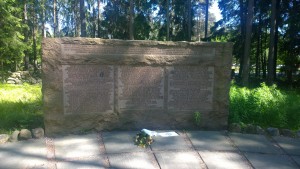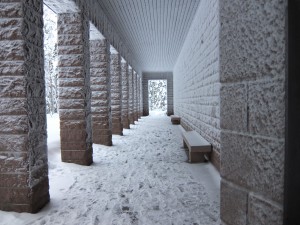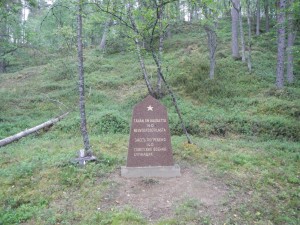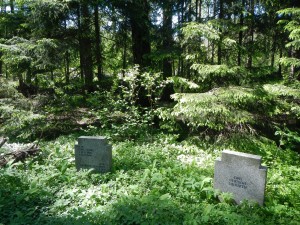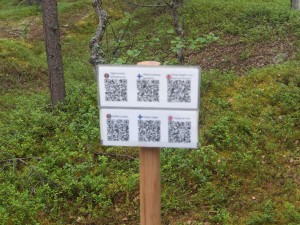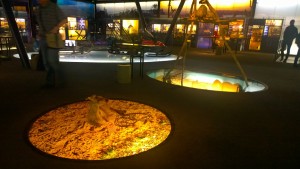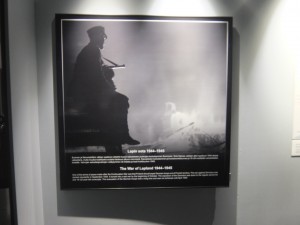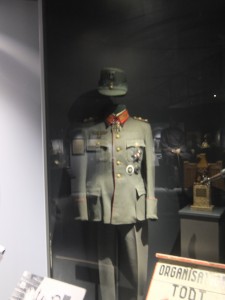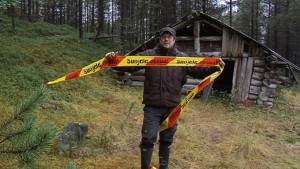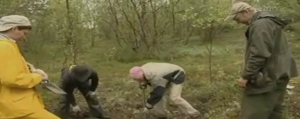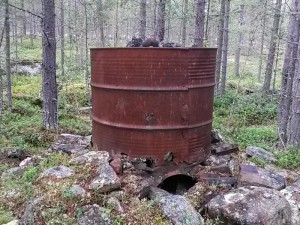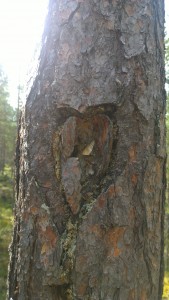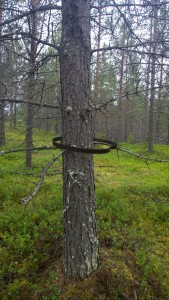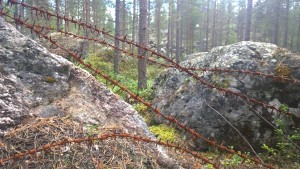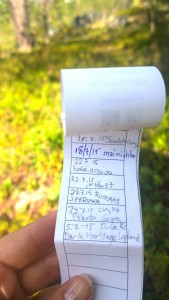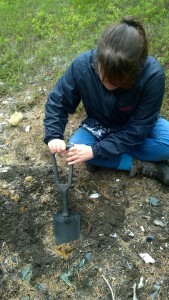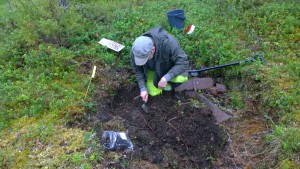Antroblogi, a blog by Anthropology students , published an article last week about project researcher Eerika Koskinen-Koivisto’s on-going research concerning the Norvajärvi German Cemetery in Rovaniemi. This cemetery is the only official monument commemorating the German military presence in Finnish Lapland and its capital city, Rovaniemi. Project members have visited there several times this year, including one visit with a guide who is also responsible for the cemetery’s maintenance. Koskinen-Koivisto is preparing a journal article about the experiences of visitors to the cemetery. The main body of her research material consists of blog entries and online travel diaries by Finnish people, featuring accounts of personal experiences of visiting the cemetery. Many of the writers have paid more than one visit to Norvajärvi cemetery because of the uniqueness of the place.
As a result of warfare during WWII in Finnish Lapland, about 15 000 German soldiers died in Finnish frontiers. Unlike Finland, Germany did not bring the bodies of the fallen soldiers back to the home country, but buried them on foreign ground. Most of the 15 000 who died in Finland between 1941–1945 are buried in the area of the former Salla municipality, which is today on Russian ground. However, there are two German soldiers’ cemeteries established in Finland: one in Vantaa, close to Helsinki, and one at Norvajärvi, Lapland.
Above: Vantaa German cemetary. Below: Mausoleum in Norvajärvi German Cemetery. Photos by Eerika Koskinen-Koivisto and Suzie Thomas.
The Norvajärvi German cemetery is located in a scenic spot by a lake on a pine forest cape about 18 km from the center of Rovaniemi. The cemetery was opened in 1963. It is owned and administrated by German state-based agency Volksbund Deutsche Kriegsgräberfürsorge, and maintained in collaboration with the local Rotary club. The cemetery’s mausoleum, designed by German architect Otto Kindt, contains the remains of over 2 700 German soldiers who fell during the Second World War. The building consist of two halls: in the entry hall there is a sculpture “Mother and son” by Ursula Querner, and the floors and walls of the main hall hold stones are carved with the names of fallen soldiers, their date of birth and time of death and military ranking.
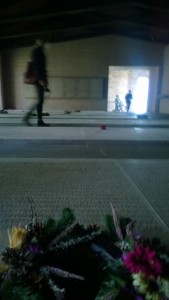 The cemetery receives about 10 000 visitors every year. The majority of them are Finnish and about one quarter of them are foreign. Finns visit the site both individually and in groups. Many of them are drawn to the site by its uniqueness and natural beauty, but also by the fact that the site bears testimony to the complex history of the area and the Second World War. Although this is a non-religious cemetery, there are many religious symbols in its setting and many visitors see the visit as spiritual endeavor, a chance to spend a moment reflecting on the nature of human kind.
The cemetery receives about 10 000 visitors every year. The majority of them are Finnish and about one quarter of them are foreign. Finns visit the site both individually and in groups. Many of them are drawn to the site by its uniqueness and natural beauty, but also by the fact that the site bears testimony to the complex history of the area and the Second World War. Although this is a non-religious cemetery, there are many religious symbols in its setting and many visitors see the visit as spiritual endeavor, a chance to spend a moment reflecting on the nature of human kind.

